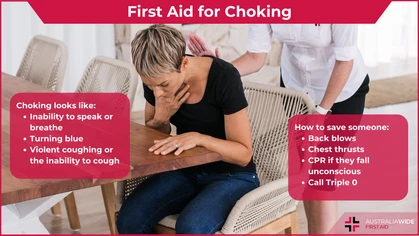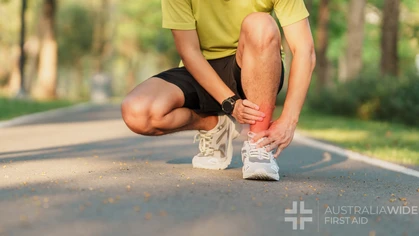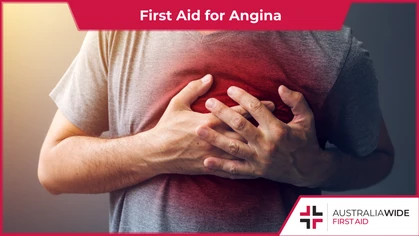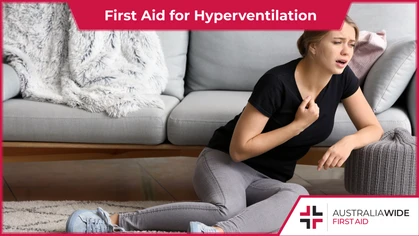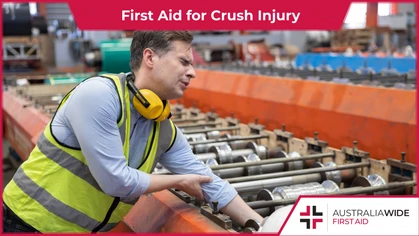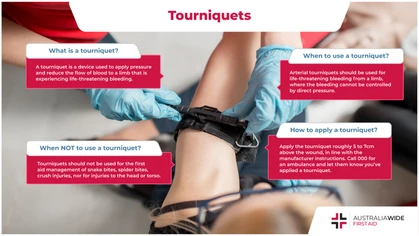First Aid for Running Injuries

How-To

Running is fast emerging as one of the most popular physical activities in Australia, and for good reason. Running can help strengthen your bones, muscles, and heart health. However, injuries regularly befall runners, including stress fractures, shin splints, and tendinopathy.
Today, we are going to cover why running is good for you, how popular running is in Australia, common injuries among runners, and how to prevent and treat common running injuries. Many runners suffer from overusing or overstressing their muscles. As such, if you are a runner, it is important to know how to treat common running injuries with first aid, and what prevention measures you can take to protect your wellbeing.Why is Running Good for You?
- Helps to build strong bones.
- Strengthens muscles.
- Helps to maintain a healthy weight.
- Improves the health of your heart.
- Reduces risk of coronary artery disease, hypertension and stroke.
- Improves mental health and reduces depression.
- Reduces cognitive decline and risk of Alzheimers’ disease.
- Improves immune system.
- Increases self-confidence.
- Increases chance of healthy ageing.
- Improves quality of sleep.
- Improves quality of life.
- Increases chance of longer lifespan.
Popularity of Running in Australia
According to AusPlay data from Sport Australia and research commissioned by Athletics Australia, an estimated 3 million Australians run as a form of exercise. Participants from the research either ran to keep fit or to beat a personal best record at fun runs. Another study conducted revealed that almost a quarter of Australians aged 14 and above go for a jog either occasionally or regularly. That is a 66% increase from a decade ago. Jogging is the fastest growing sport in Australia over the last 10 years, ahead of hiking, cycling and yoga. With the influx of fitness apps and trackers, it is easier than ever for runners to measure their progress, which is undoubtedly a great motivation.Common Running Injuries
Runner’s Knee
Runner's knee, which is also known as patellofemoral pain syndrome, refers to the pain that builds up around the kneecap. Causes of runner’s knee include overuse, weak thigh muscles, flat feet and poor alignment of the kneecap. The pain in the knee may also be referred from other parts of the body, for instance, the back or hip.First Aid Treatment for Runner's Knee
- Rest: Avoid activities that cause pain such as running, squatting and lunging.
- Ice your knee with a cold compress for 20-30 minutes every 3-4 hours for two to three days to reduce the pain and swelling.
- Compression: Wrap your knee with an elastic bandage for extra support.
- Elevate your leg on a pillow when you sit or lie down..
- You may need to take non-steroidal anti-inflammatory (NSAIDs) medication to reduce pain. Make sure to follow the directions on the packet. You should also refer to a medical professional to assess the extent of the soft tissue damage.
Stress Fracture
A stress fracture is a small crack in a bone caused by overuse and repetitive activities. This is most common in runners and athletes who play running-intensive sports. It also occurs due to osteoporosis or other diseases that weaken the bones.First Aid Treatment For Stress Fracture
Follow the RICER protocol:- Rest: Avoid activities that put weight on your foot. Wear a very supportive shoe if you must bear weight.
- Ice: Apply a cold compress to the injury site immediately for 20 minutes, several times a day, to reduce the pain and swelling. Do not apply ice directly to your skin.
- Compression: Wrap the injury site with a soft bandage to reduce swelling.
- Elevation: Keep your leg raised on a pillow, positioned higher than your heart.
- You may need to take non-steroidal anti-inflammatory (NSAIDs) medication to relieve pain. Make sure to follow the directions on the packet. You should also refer to a medical professional to assess the extent of the soft tissue damage.
Shin Splints
The medical term for Shin Splints is tibial stress syndrome, and it refers to the pain felt along the shin bone from the knee to the ankle. The main causes of this condition are overuse and exercising beyond the current fitness level. The exact cause of the pain is unknown, though recent research suggests that it is a stress reaction from the bone.First Aid Treatment for Shin Splints
- Rest
- Apply a cold compress to the affected areas for 20 minutes, three to four times daily.
- You may need to take an anti-inflammatory painkiller, such as aspirin or ibuprofen, to reduce pain. Make sure to follow the directions on the packet.
- Perform only low impact activities, such as swimming, as a form of exercise. You should also consult a medical professional to assess the extent of the damage.
Achilles Tendinopathy
Achilles Tendinopathy is an injury to the tendon which connects the muscles of the lower leg to the heel bone. It is a common injury among runners and sports players. It is usually caused by repeated stress on the Achilles over a period of time.First Aid Treatment for Achilles Tendinopathy
- Stop the activity that triggered the symptoms. Rest to ease the pain and to allow the Achilles to recover quicker.
- Apply ice or a cold compress to the area for 10 minutes every hour for the first 24 hours and then three or four times a day for the next few days. Do not apply ice directly to the skin.
- Use compression support or compression bandages on the ankle and foot to reduce swelling.
- Keep the ankle and Achillles elevated above heart level to reduce swelling. You should also refer to a medical professional to assess the extent of the soft tissue damage.
Common Risk Factors for Running Injuries
- Age
- Higher BMI
- Previous history of a musculoskeletal injury in the last 12 months.
- No running experience or a running experience of less than five years.
- Overtraining or running at a higher intensity level and beyond one’s current fitness level. This strains the muscles, tendons and ligaments. Overusing the strained muscles leads to injuries.
- Not performing regular interval training as part of training.
- Incorrect running technique and biomechanics.
- The types of surfaces being run on. This includes the road, cement and grass. The impact of running on hard surfaces can cause stress fractures and shin pain.
- Incorrect footwear. The wrong footwear can cause blisters and shin pain.
How to Prevent Running Injuries
- Wear a well-fitted and a well-padded pair of running shoes.
- Limit repetitive motions that continuously put stress on your muscles and ligaments.
- Reduce body weight. Less body weight means less stress on your lower limbs with every step.
- Warm up for 5 minutes prior to your run and stretch your calf muscles after running.
- Avoid running on hard surfaces.
- Cross-train with low-impact activities such as cycling or swimming.
- Add strength training to your workout plan.
- Eat a healthy diet to keep your bones strong and healthy.
Originally published at
https://www.australiawidefirstaid.com.au/resources/first-aid-for-running-injuries
as part of the Australia Wide First Aid Articles Library
